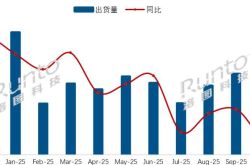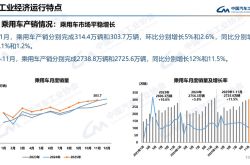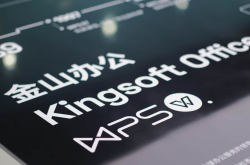6% stronger than the reference version! GALAX RTX 5080 HOF NOX OC review: customizable top cover and backplate
![]() 08/22 2025
08/22 2025
![]() 565
565
I. Introduction: GALAX's first 'Black HOF'
As a model that emphasizes aesthetics in GALAX's graphics card lineup, the HOF series has previously featured a white exterior.
To provide users with more options, GALAX recently introduced the RTX 5080 HOF NOX OC, with a predominantly black color scheme, also known as the 'Black HOF'.
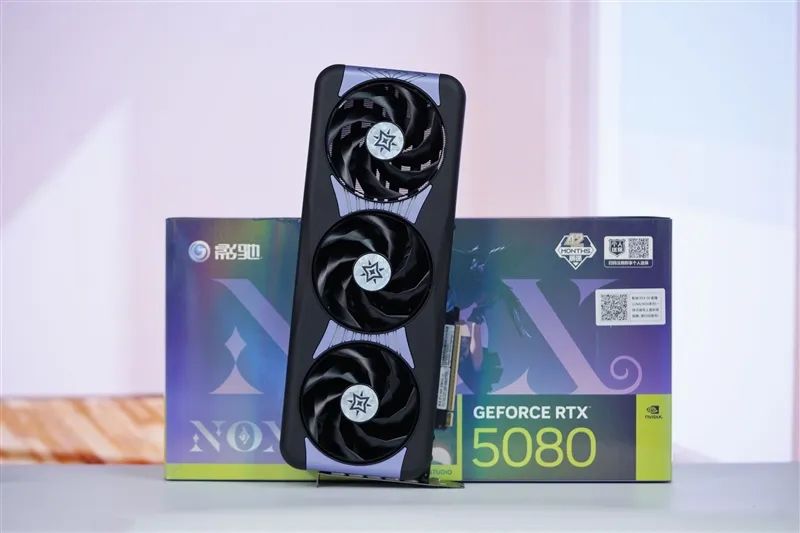
Of course, the changes go beyond just color! Compared to its predecessor, the RTX 5080 HOF NOX OC adds a magnetic top cover design, making it easier for gamers to clean dust. It's even possible that GALAX will introduce new case designs in the future, allowing users to not only transform their graphics card into a whole new look but also replace aging fans.
In terms of cooling, most graphics cards, including the reference version, use a mirror base, with some budget models using direct heat pipe contact.
The RTX 5080 HOF NOX OC employs a VC vapor chamber, coupled with a total of 7 heat pipes (4x8mm + 3x6mm), a cooling configuration that should meet expectations for a non-reference card.
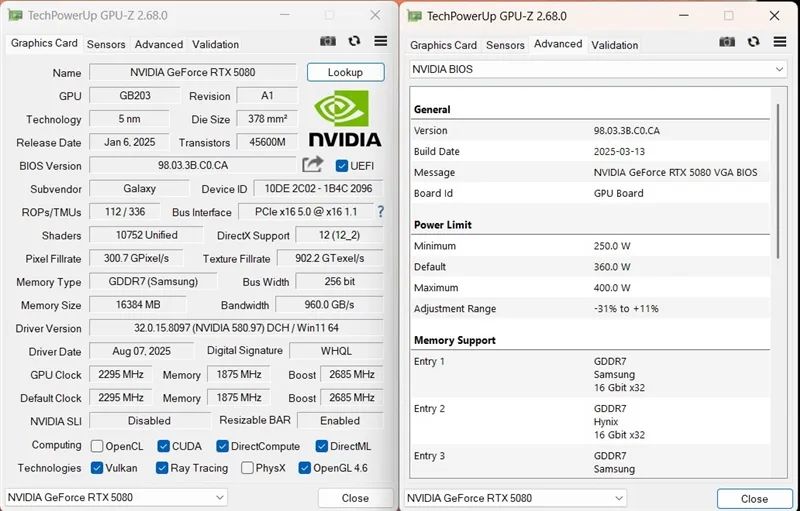
From the GPU-Z screenshot, it can be seen that the RTX 5080 HOF NOX OC has a boost clock that is 68MHz higher than the reference version, with both having a TDP of 360W, but it can be pushed to 400W through overclocking software.
II. Gallery: Mirror backplate + 7-heatpipe VC vapor chamber cooling
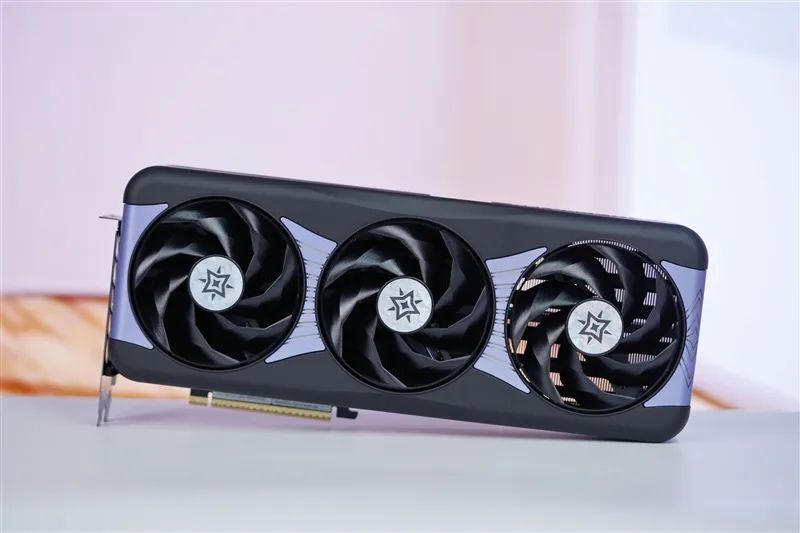
Black HOF, featuring an all-black front design with ARGB lighting on the shroud in the middle.
The graphics card measures 335×140×56mm, with a 2.5-slot thickness.
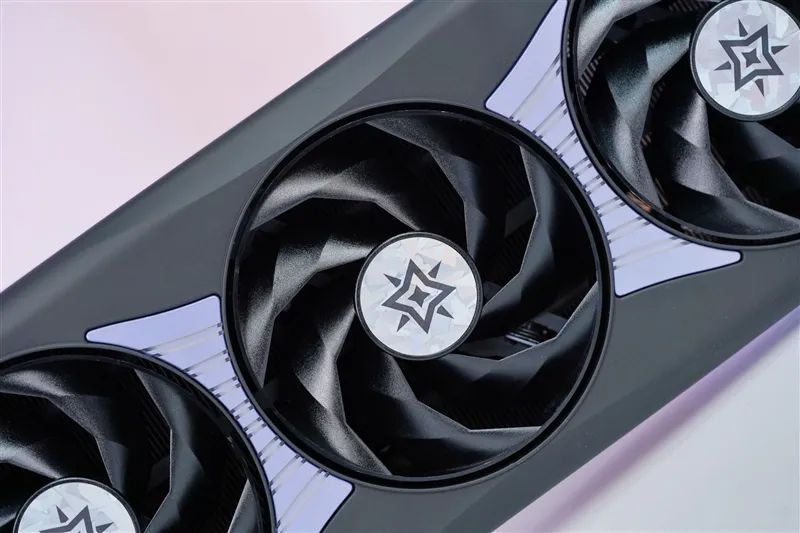
The active cooling employs new Frost Loop fan blades, with a tri-fold large fan blade in a ring chain structure. The number of blades has been reduced from 11 to 7, achieving a 15% increase in air pressure at the same noise level; a 5% reduction in noise and a 10% increase in air pressure at the same fan speed, while also enhancing the overall strength of the fan blades.
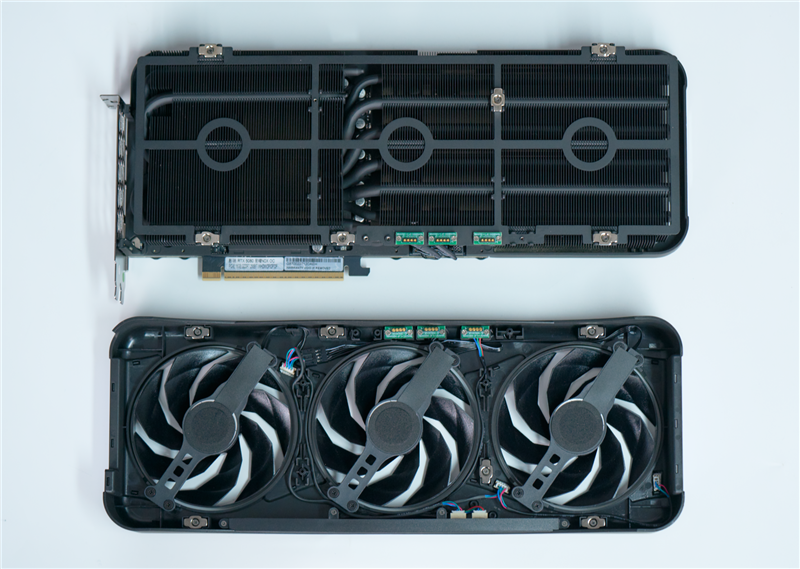
The Magnetic Star MAX cooling module can be easily removed.
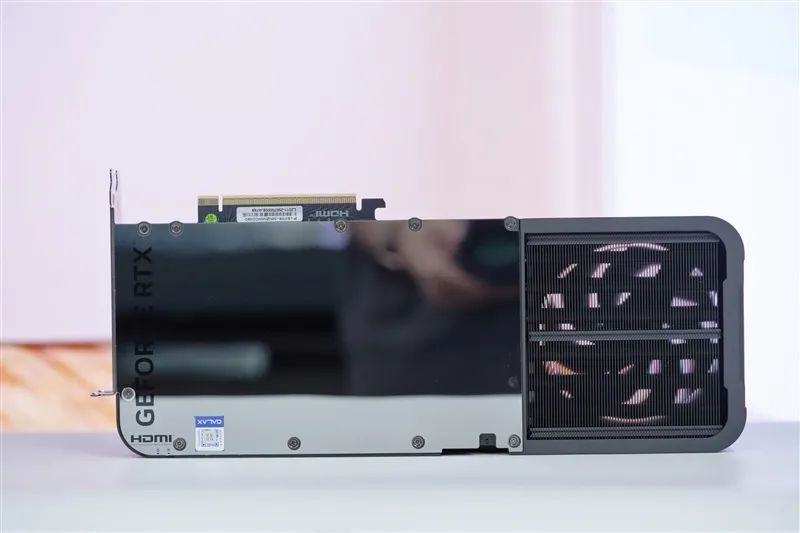
A very distinctive backplate, which GALAX has named Star Mirror Realm, incorporating mirror elements that can interact with the lighting effects of the host computer when powered on.
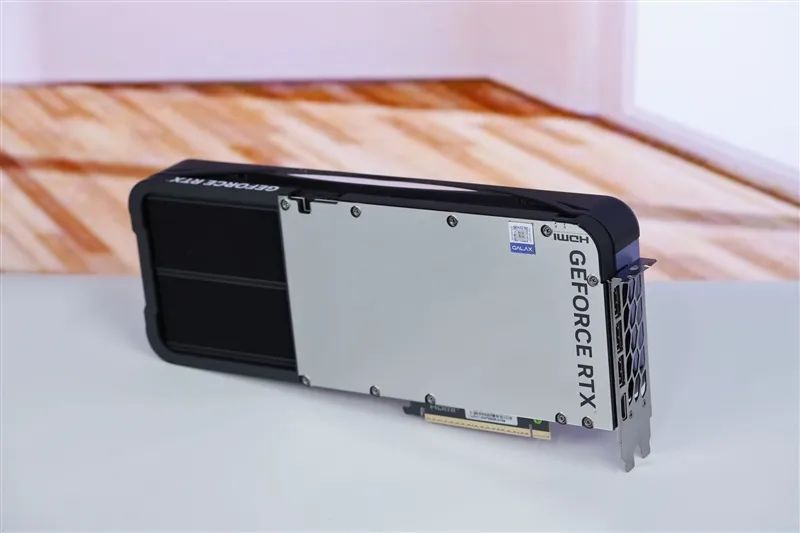
A silver mirror backplate is included, along with a regular backplate, allowing users to freely switch between them based on their needs.
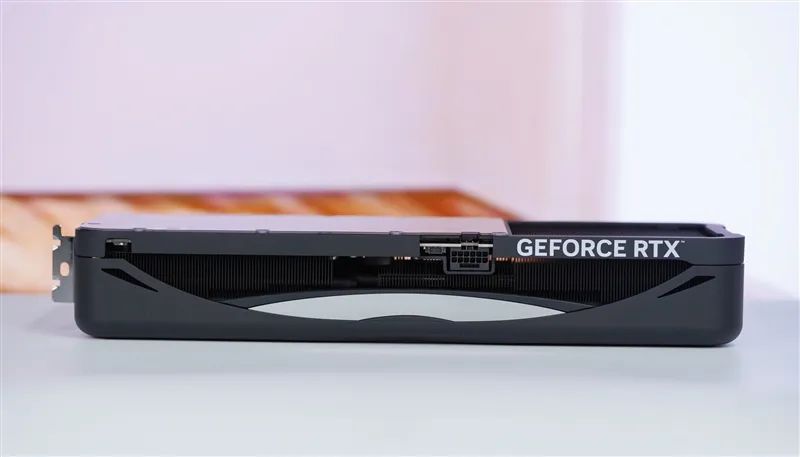
Top-view image, with a 12V-2x6 power supply connector in the middle.

Three DP 2.1b and one HDMI 2.1b video interfaces.
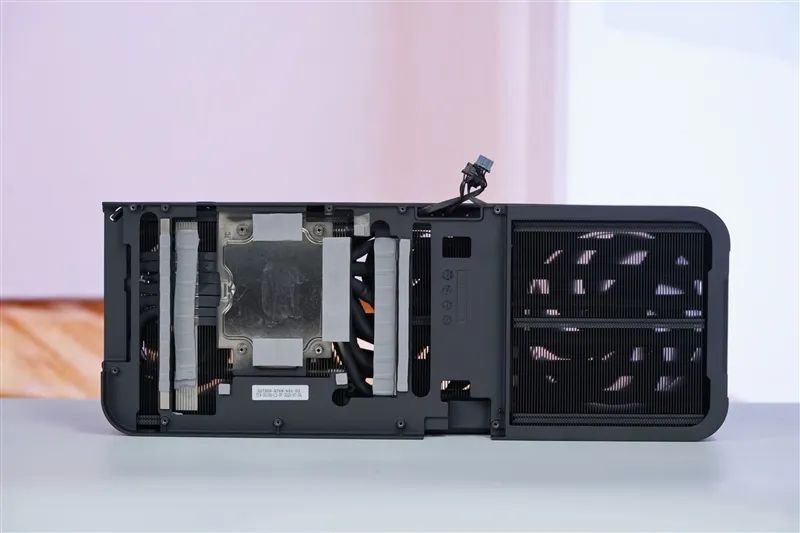
The Magnetic Star MAX+ cooler adopts a saturated fin structure design, with 4x8mm and 3x6mm heat pipes interspersed using reflow soldering.
The cooling base is an oversized VC liquid-cooled vapor chamber.

PCB front side, featuring a 21-phase power supply design with 14 phases for the core, 4 phases for the memory, and 3 phases for FBVDD.
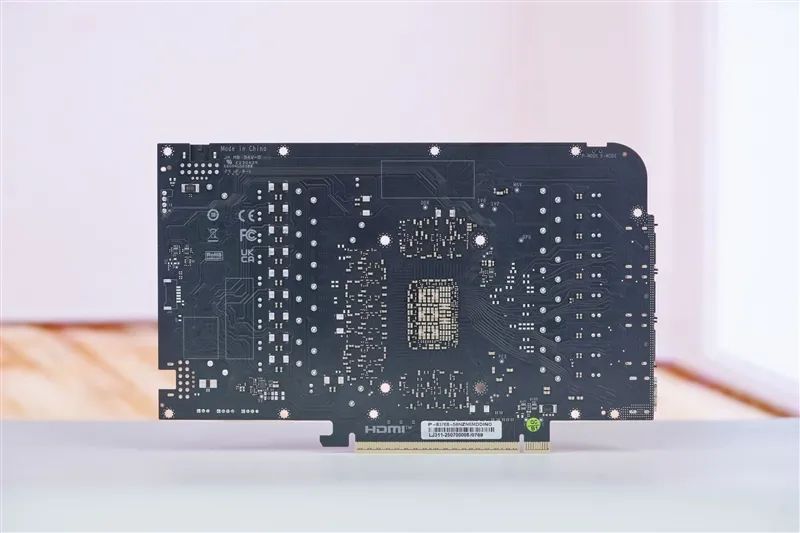
PCB back side.
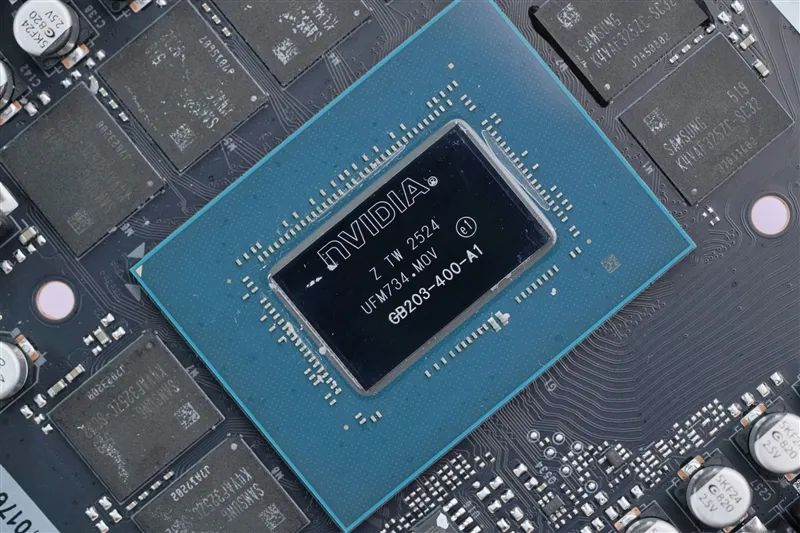
The RTX 5080 employs a full-powered GB203-400-A1 core, with a chip area of 378mm² and 45.6 billion transistors.
Next to the GPU are 8 Samsung GDDR7 memory chips, each with 2GB, totaling 16GB of capacity, an effective frequency of 30GHz, and a bandwidth of 960GB/s.
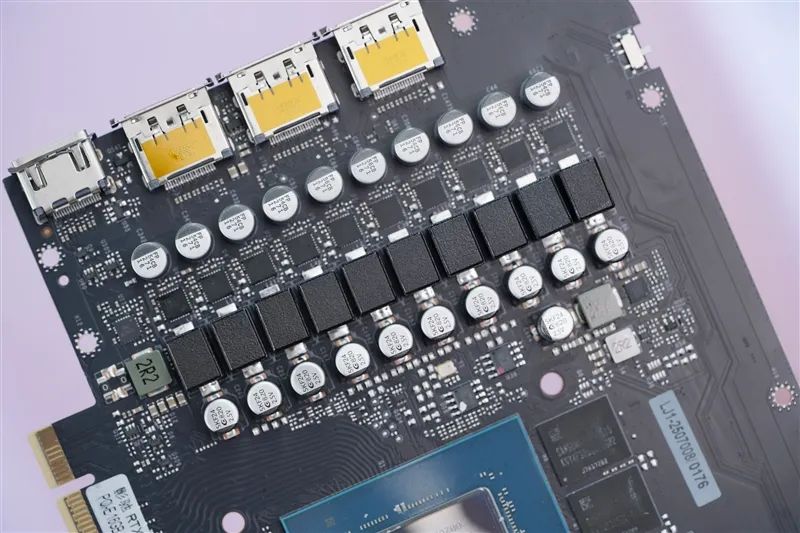

Close-up of the power supply circuit.
III. 3DMark Testing: Maximum operating frequency of 2977MHz
The test platform is as follows:
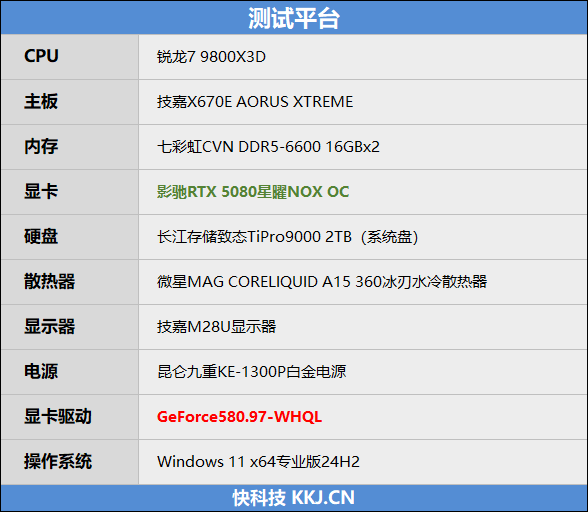
1. 3DMark Fire Strike
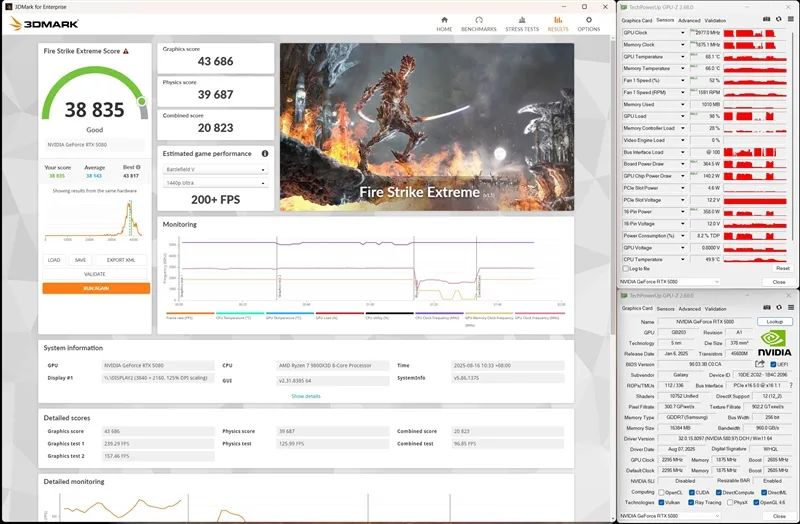
In the 2K resolution 3DMark Fire Strike Extreme test, the RTX 5080 HOF NOX OC achieved a graphics score of 43,686, with a maximum core temperature of 68°C, a maximum core operating frequency of 2977MHz, and a maximum power consumption of 365W.
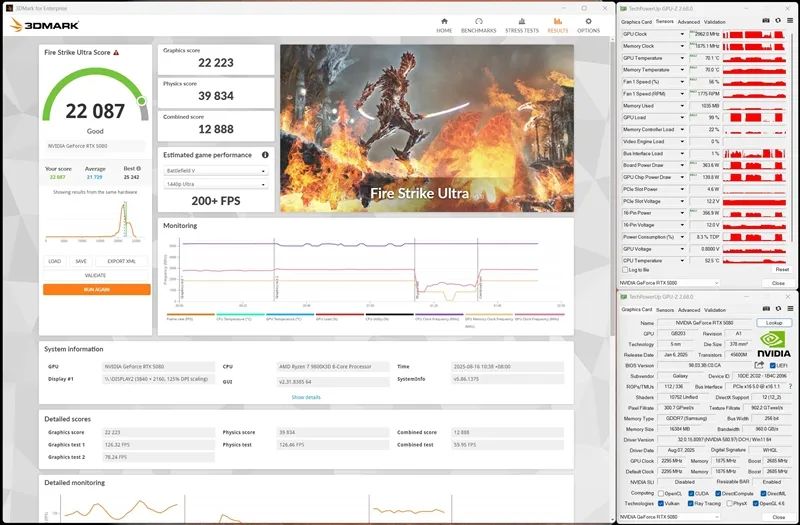
In the 4K resolution 3DMark Fire Strike Ultra test, the RTX 5080 HOF NOX OC achieved a graphics score of 22,223, with a maximum core temperature of 70°C, a maximum core operating frequency of 2962MHz, and a maximum power consumption of 363W.
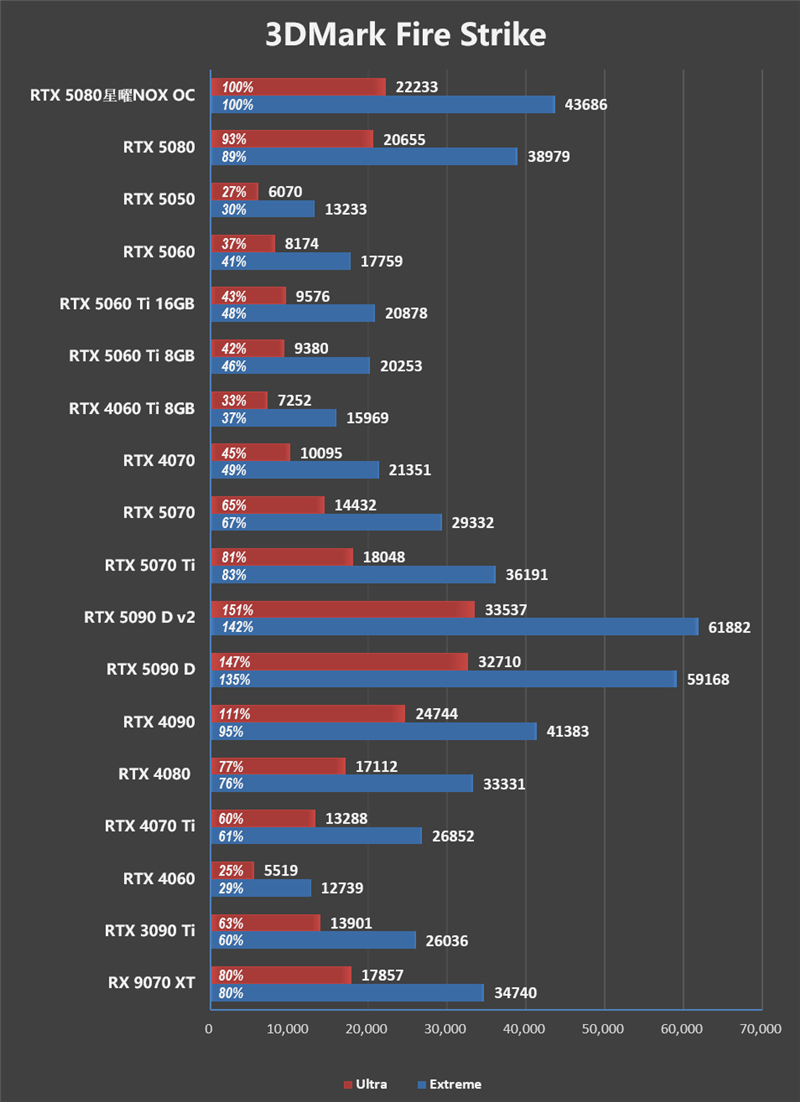
2. 3DMark Time Spy
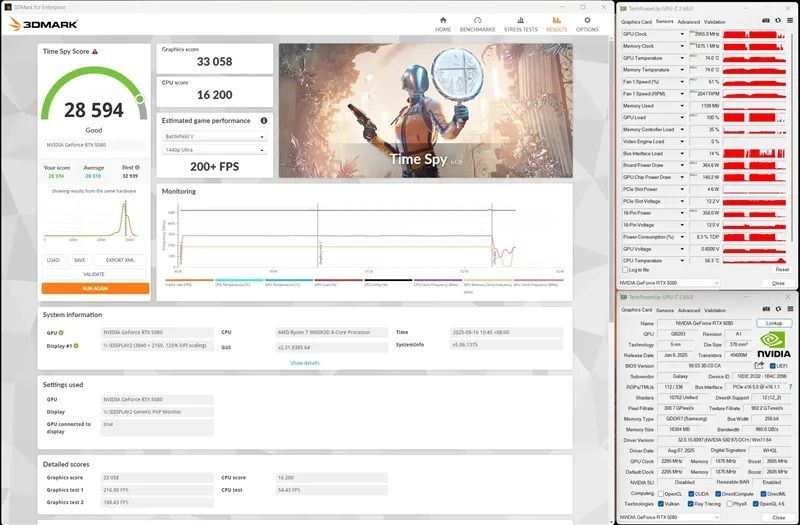
In the 2K resolution 3DMark Time Spy test, the RTX 5080 HOF NOX OC achieved a graphics score of 33,058, with a maximum core temperature of 74°C, a maximum core operating frequency of 2955MHz, and a maximum power consumption of 365W.
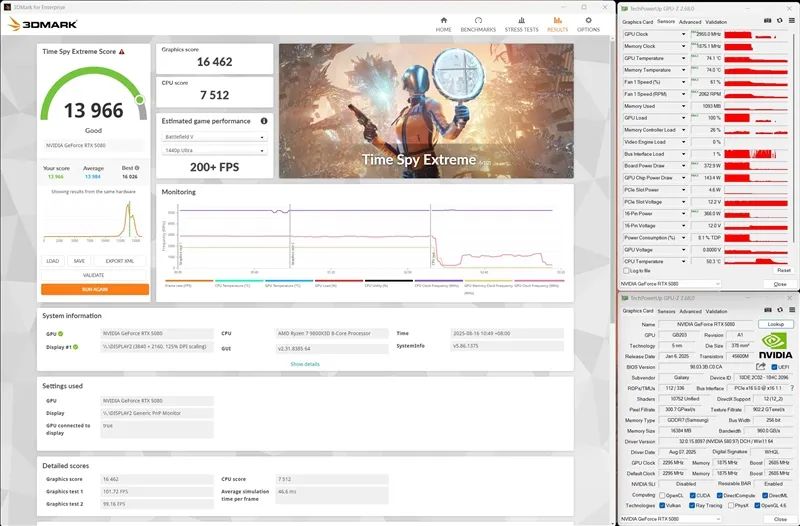
In the 4K resolution 3DMark Time Spy Extreme test, the RTX 5080 HOF NOX OC achieved a graphics score of 16,462, with a maximum core temperature of 74°C, a maximum core operating frequency of 2955MHz, and a maximum power consumption of 373W.
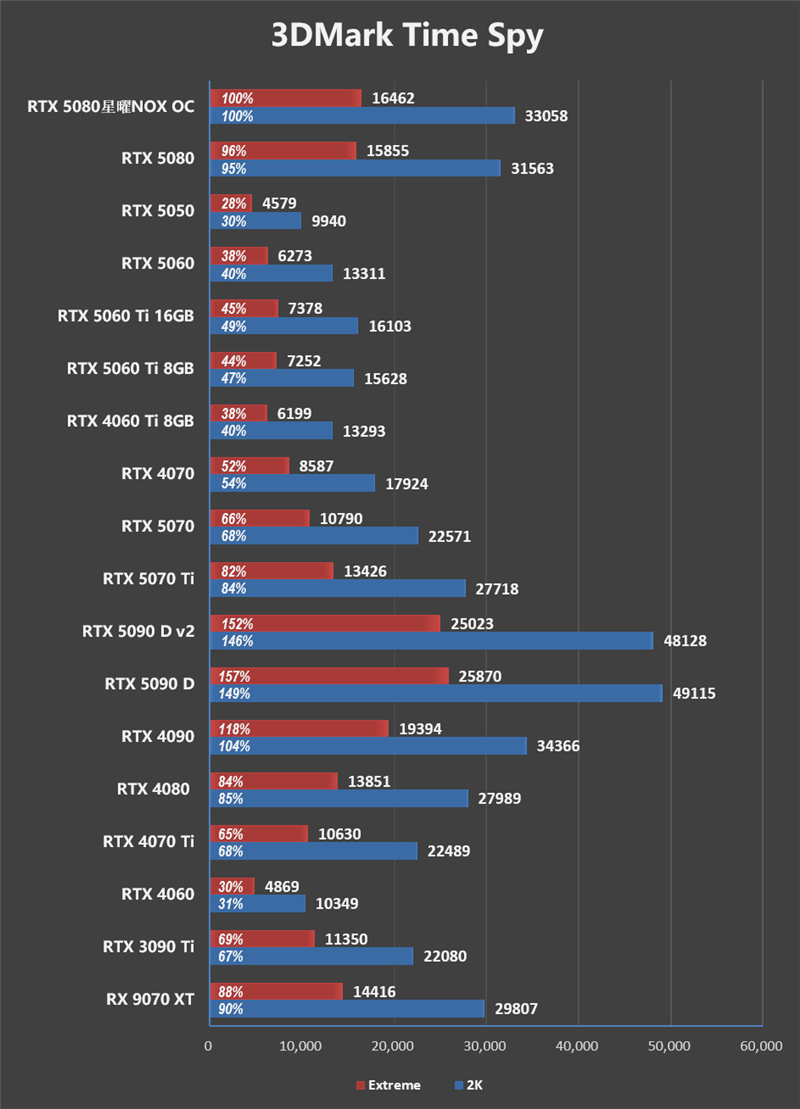
IV. 4K Gaming Tests: 6.6% stronger than the reference version
1. Assassin's Creed: Valhalla
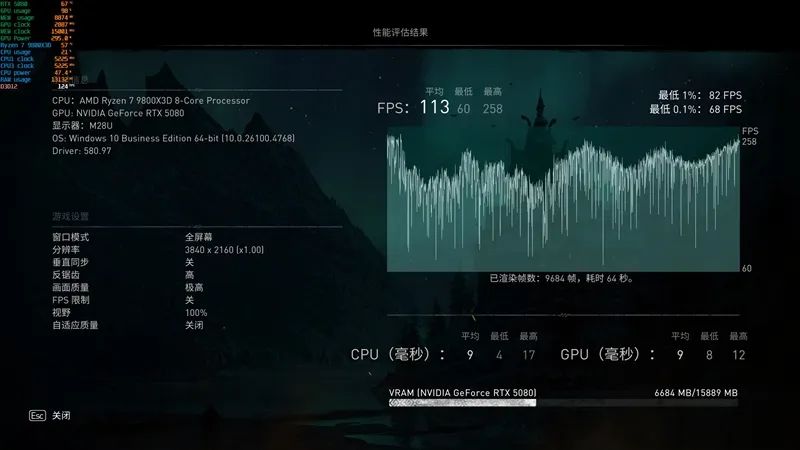
2. Horizon: Zero Dawn
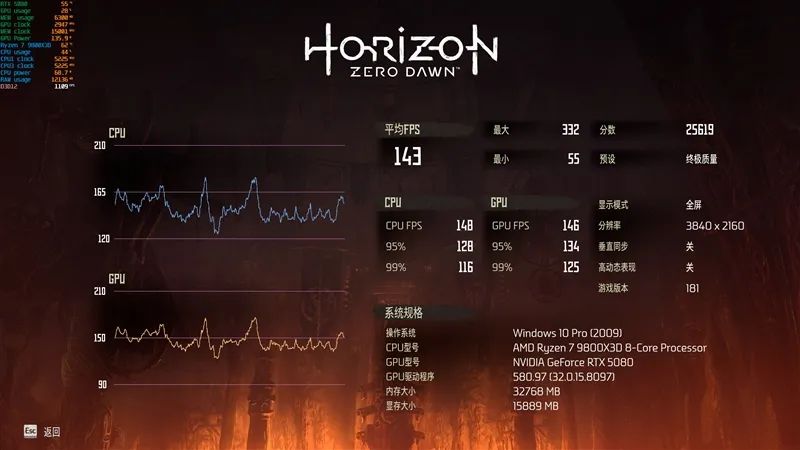
3. Tomb Raider: Shadow of the Tomb Raider
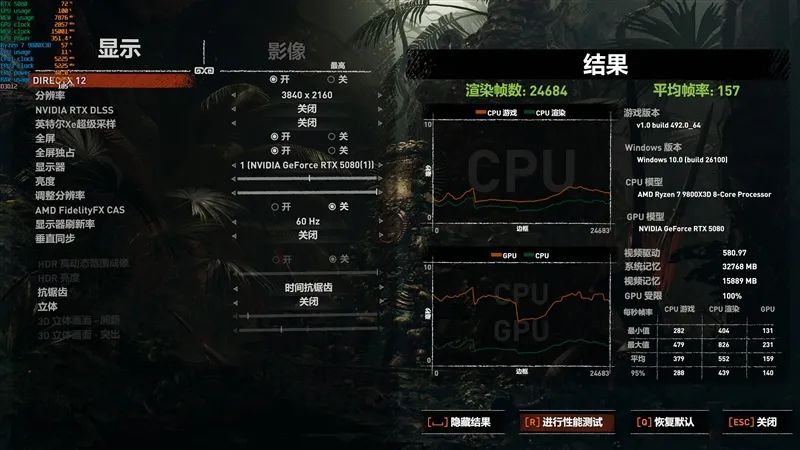
4. Black Myth: Wukong
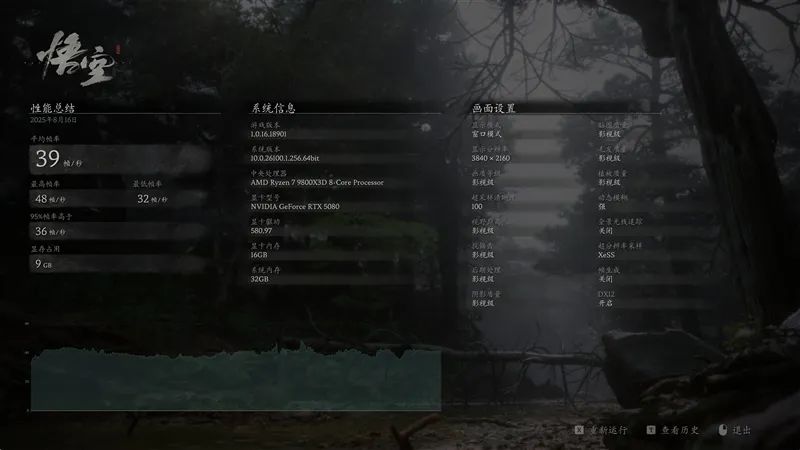
5. Hogwarts Legacy
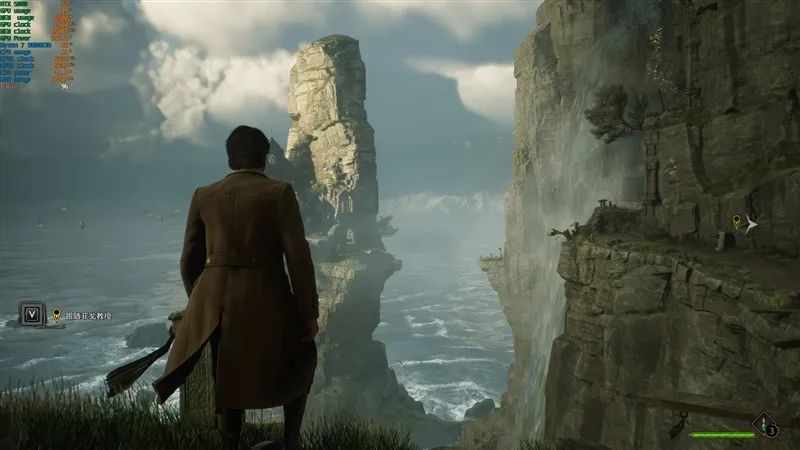
6. Forza Horizon 5
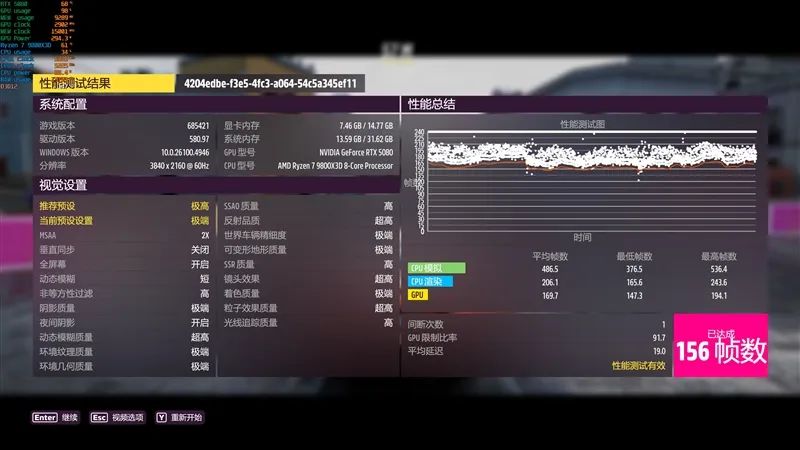
7. Cyberpunk 2077
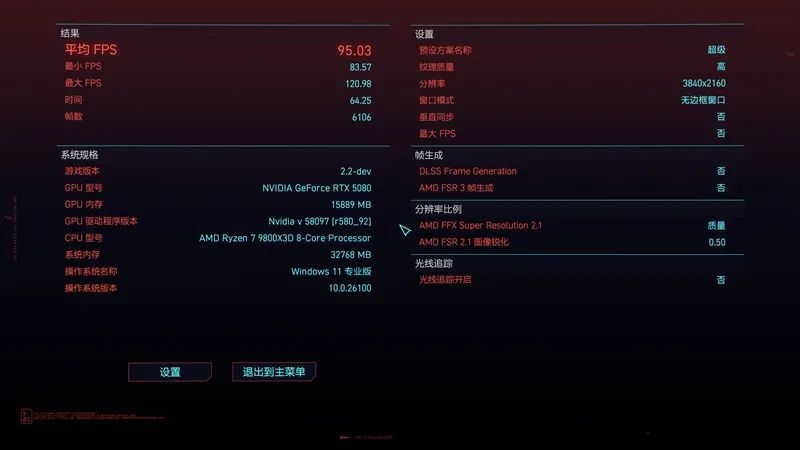
8. Alan Wake
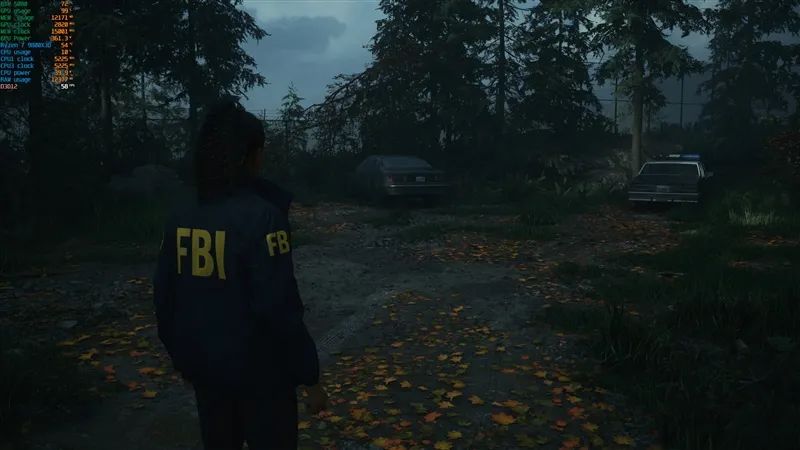
9. Star Wars: Jedi Survivor
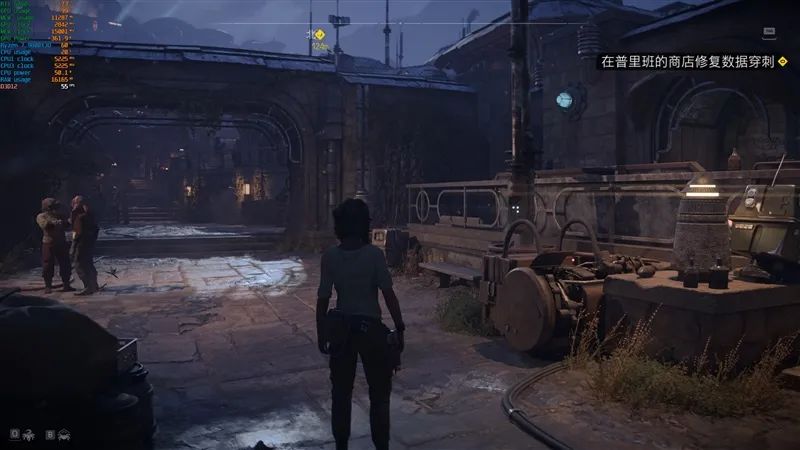
The test data summary is as follows:
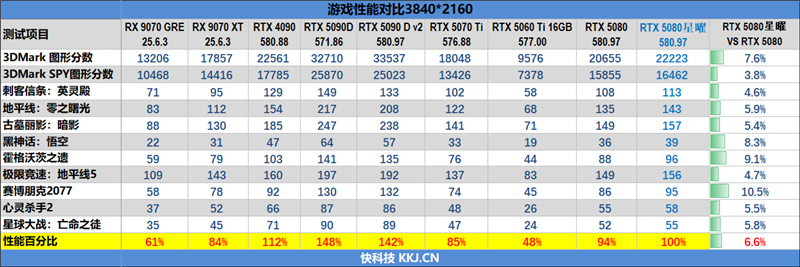
Based on the test results of 9 games, the Galaxy RTX 5080 StarGlow NOX OC performs 6.6% better than the reference model and is only 12% behind the RTX 4090.
V. DLSS 4 Test: Average Performance Boost Exceeding 600%
We tested a total of 5 games that support DLSS 4: "Black Myth: Wukong", "Star Wars: Jedi Survivor", "Alan Wake 2", "Cyberpunk 2077", and "Hogwarts Legacy".
All DLSS 4 and ray tracing tests were conducted at 4K resolution.
1. Black Myth: Wukong
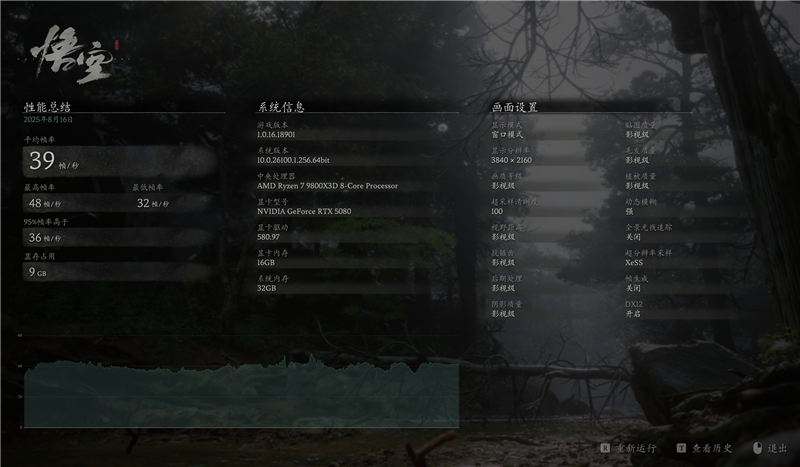
At the highest 4K resolution, the RTX 5090 D v2 achieved a frame rate of 57 FPS.

After enabling ray tracing, it still maintained 20 FPS.
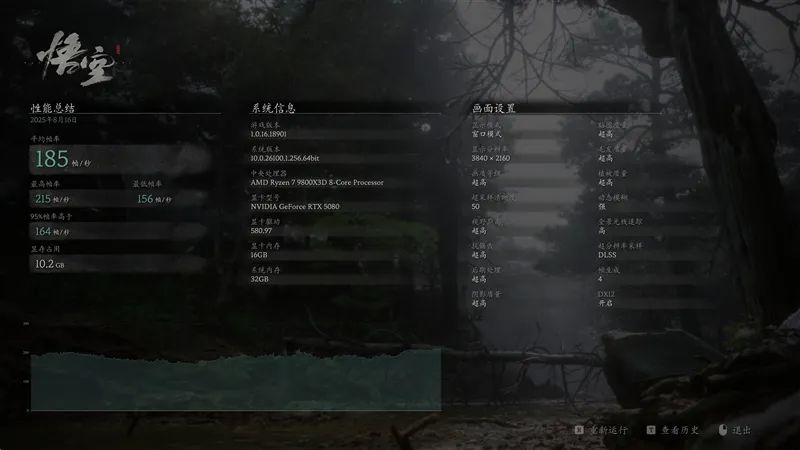
With DLSS 4 Frame Generation enabled, the frame rate soared to 185 FPS, representing an increase of over 825%.

2. Star Wars: Jedi Survivor
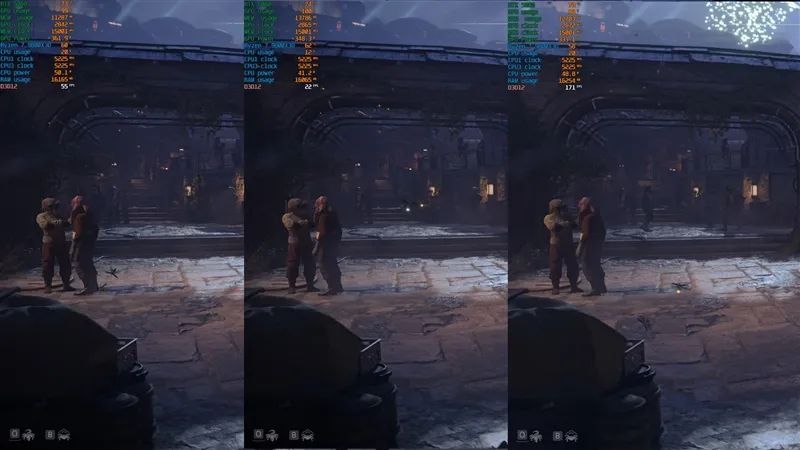
At the highest 4K resolution, the RTX 5080 StarGlow NOX OC achieved a frame rate of 55 FPS.
After enabling ray tracing, it dropped to 22 FPS.
With DLSS 4 Frame Generation enabled, the frame rate soared to 171 FPS, representing an increase of 677%.
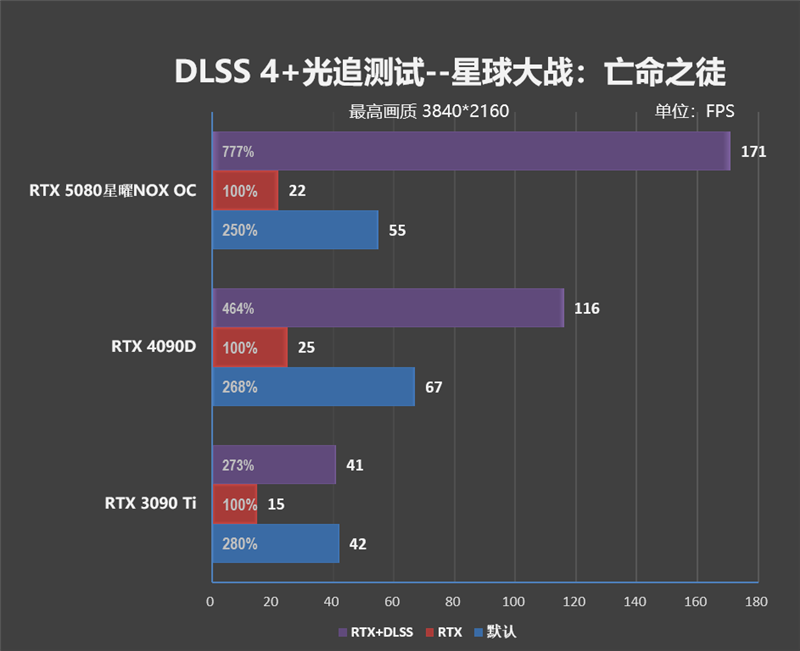
3. Alan Wake 2
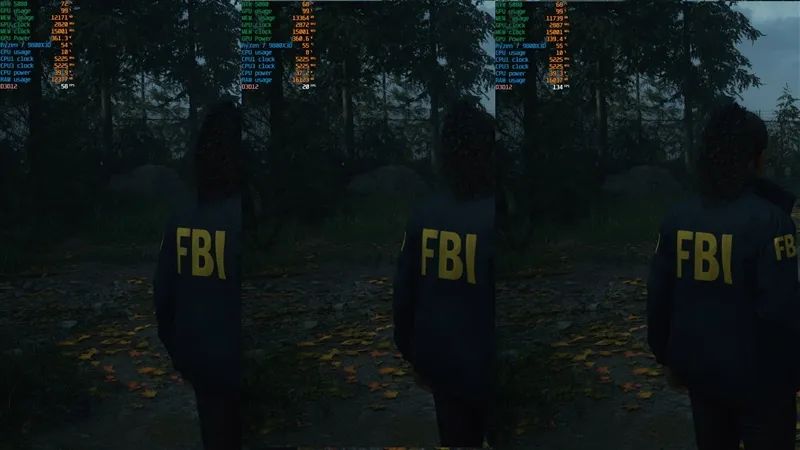
At the highest 4K resolution, the RTX 5080 StarGlow NOX OC achieved a frame rate of 58 FPS.
After enabling ray tracing, it dropped to 20 FPS.
With DLSS 4 Frame Generation enabled, the frame rate soared to 134 FPS, representing an increase of 570%.
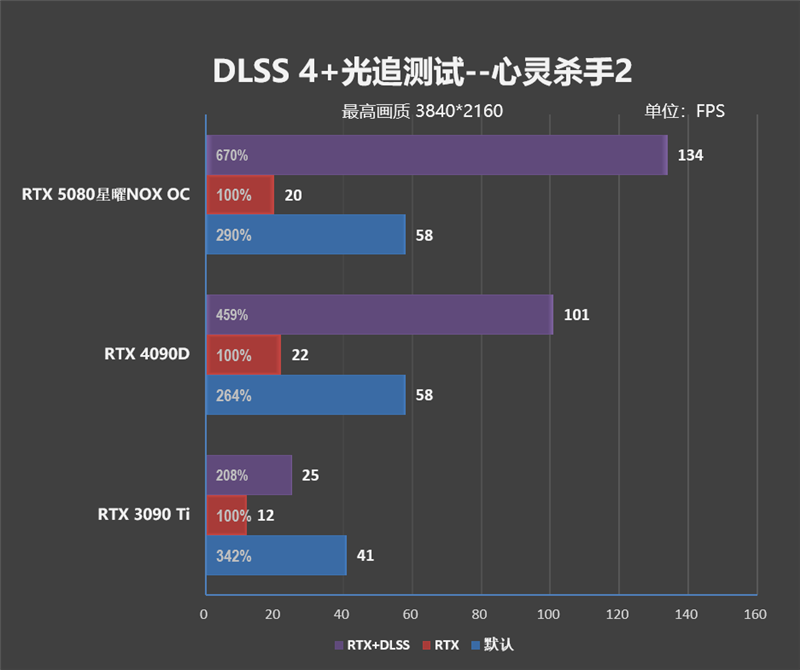
4. Cyberpunk 2077
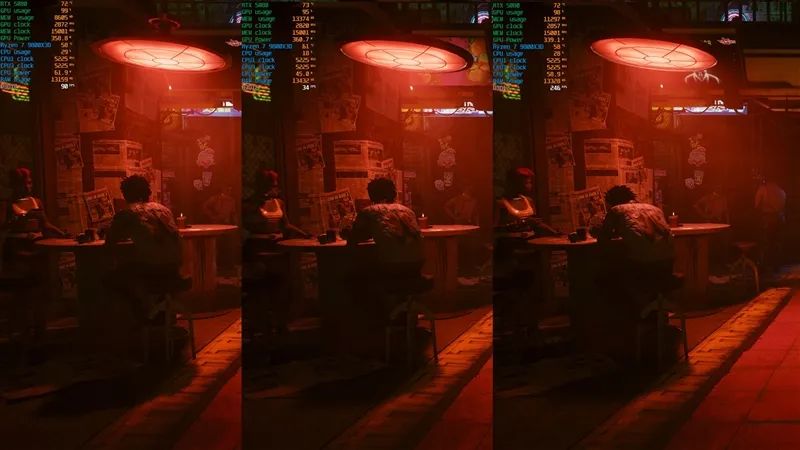
"Cyberpunk 2077" achieved a frame rate of 90 FPS at 4K resolution. After enabling ray tracing, it dropped to 34 FPS. With DLSS 4 enabled, the frame rate increased to 246 FPS, representing an increase of 624%.
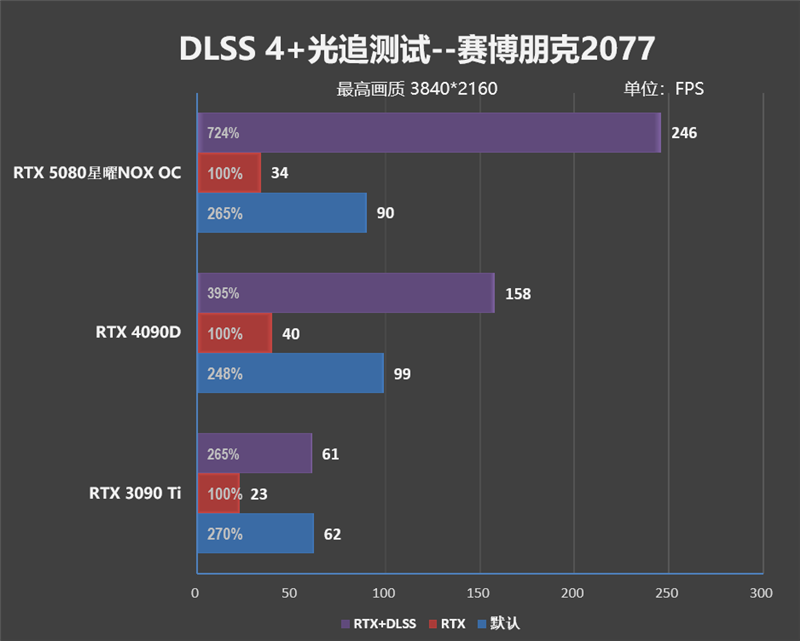
5. Hogwarts Legacy
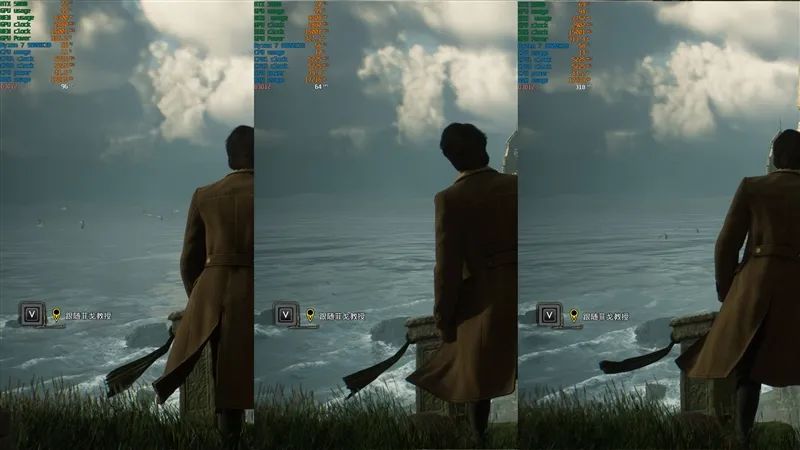
At the highest 4K resolution, the RTX 5080 StarGlow NOX OC achieved a frame rate of 96 FPS. After enabling ray tracing, it dropped to 64 FPS. With DLSS 4 enabled, the frame rate increased to 318 FPS, representing an increase of 397%.
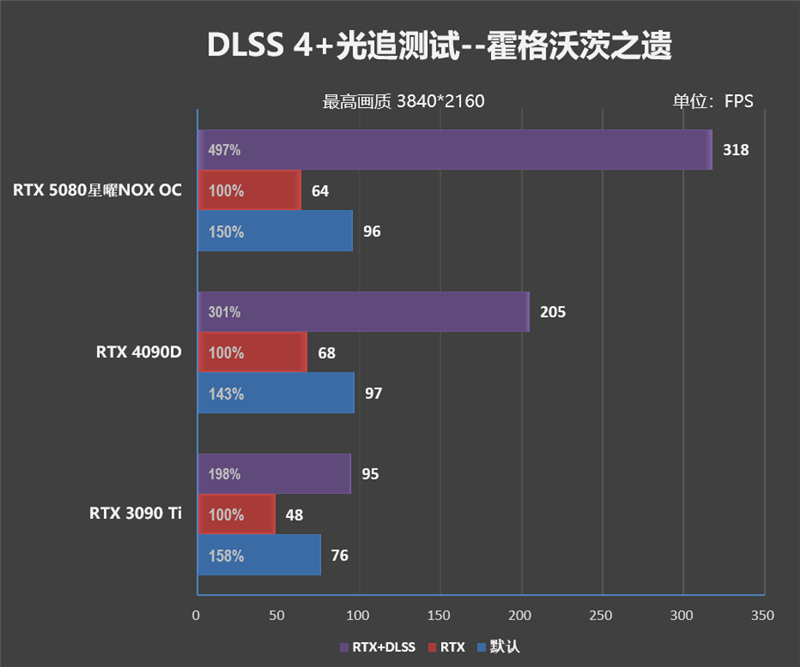
Test data summary:

VI. Stress Test and Overclocking: Overclocking Can Boost Performance by 7%
1. Stress Test
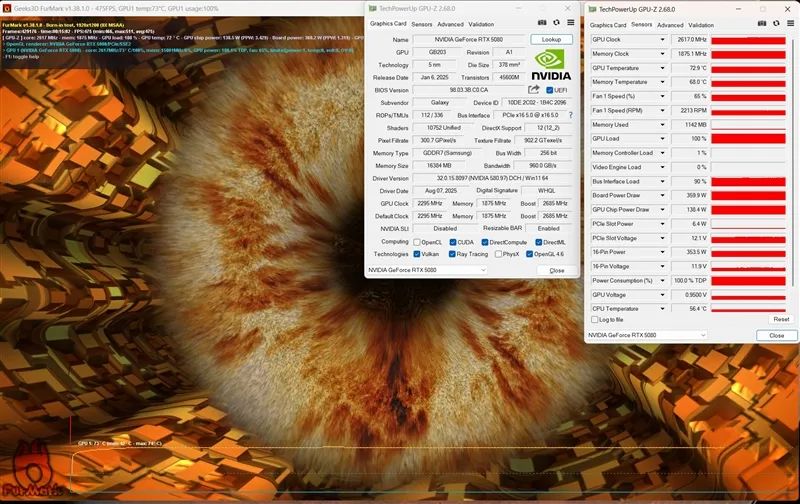
First, we used Furmark to stress test the Galaxy RTX 5080 StarGlow NOX OC, with settings of 1920*1200 resolution and 0AA. The test lasted 26 minutes.
After 15 minutes of operation, the temperature of the RTX 5080 StarGlow NOX OC stabilized at around 73°C, with a GPU power consumption of 360W, a GPU frequency of 2617MHz during the stress test, and a CPU fan speed of 2230 RPM.
2. Overclocking

The Galaxy RTX 5080 StarGlow NOX OC has a boost frequency of 2685MHz and a memory frequency of 28GHz. In actual testing, the core frequency increased by 333MHz, and the memory frequency was overclocked from 28GHz to 32GHz. It could operate stably with a power consumption of 400W, achieving a memory bandwidth of 1024GB/s.
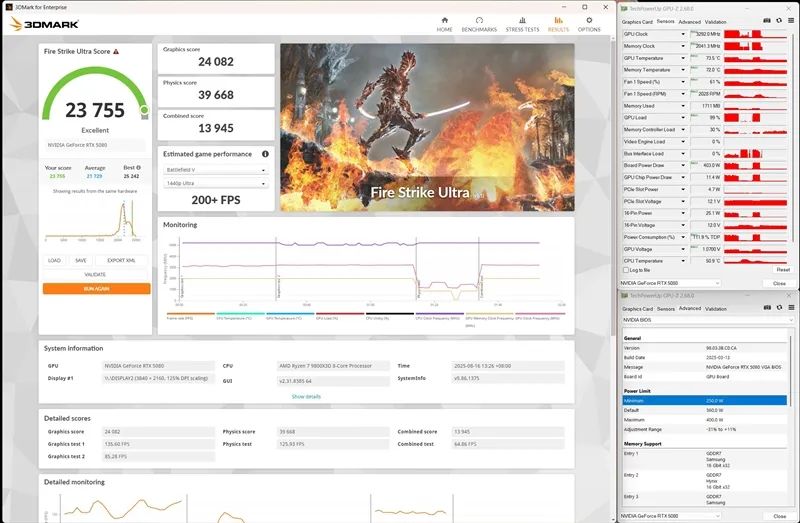
After overclocking, the 3DMark Time Spy Extreme score was 24082, which is 1859 points higher than the default frequency, representing a 9% increase.
During the test, the maximum operating frequency was 3292MHz, and the maximum power consumption was 226W.
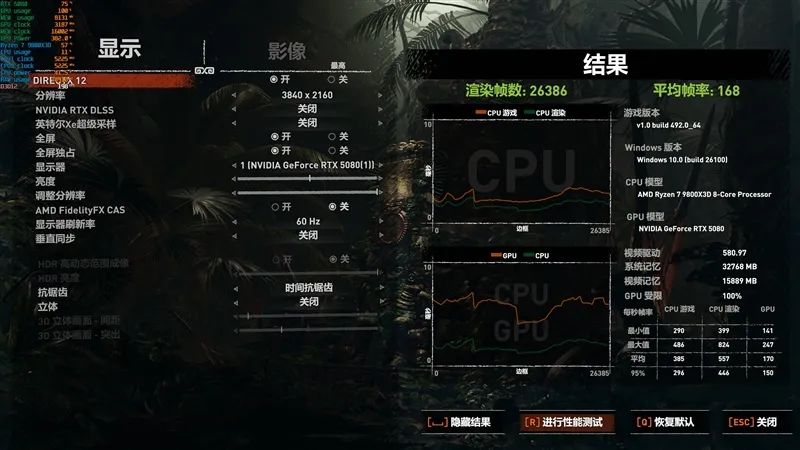
In actual testing with "Tomb Raider: Shadow of the Tomb Raider", at the highest 4K resolution, the frame rate increased from 157 FPS to 168 FPS after overclocking, representing a 7% boost.
VII. Conclusion
The distinguishing feature of the Galaxy RTX 5080 StarGlow NOX OC is that it is the industry's first graphics card with a magnetic cover. When the fans get dirty, you can easily remove the cover and clean it in just 2-3 minutes. You can even replace the black cover with a white one to transform the black StarGlow into a white StarGlow.
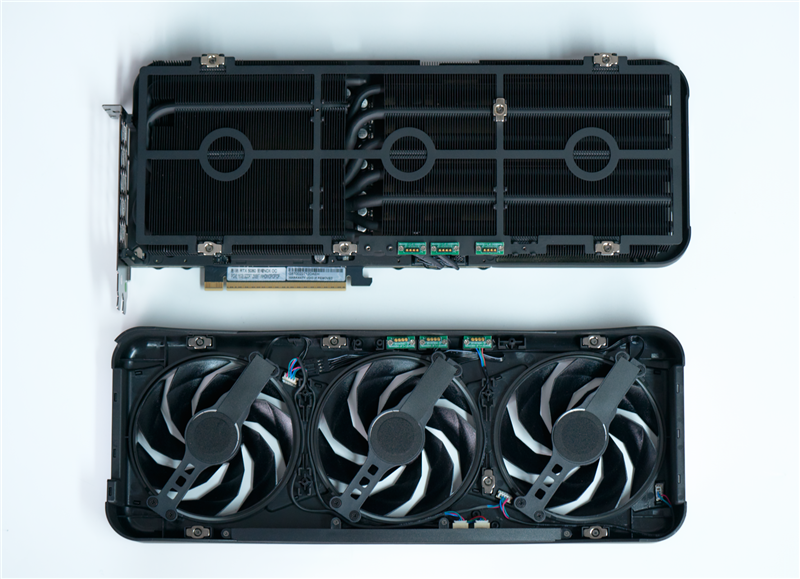
What's most surprising is its performance.
Previously, non-reference RTX 5080 graphics cards of the same specifications were only about 3% faster than the reference model, but the Galaxy RTX 5080 StarGlow NOX OC is 6.6% faster.
The reason for this is likely that Galaxy's BIOS has relaxed the limits on operating frequency. For example, in the 3DMark test, the actual maximum operating frequency of the RTX 5080 WindForce OC was about 200MHz higher than that of the reference model. This was also the case in actual gaming tests.
Moreover, this graphics card has impressive overclocking capabilities. The core frequency can be easily overclocked by 333MHz, and the memory frequency can be overclocked from 28GHz to 32GHz. After overclocking, performance can be further boosted by 7-8%. At this point, its overall performance surpasses the RTX 4090 D and is very close to the RTX 4090.
The official price of the Galaxy RTX 5080 StarGlow NOX OC is 9999 yuan. Considering its powerful overclocking capabilities, you can easily make its performance catch up with the RTX 4090 D, which costs 15,000 yuan, with just a little effort. Additionally, there are frame rate bonuses from DLSS 4 and bonuses in AI computing power from FP4 precision, making its overall performance actually surpass that of the previous-generation flagship.

